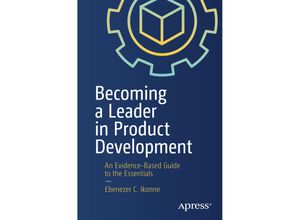It is becoming increasingly challenging for product development leaders to effectively lead as
workplace demands continue to increase. The rate of change in technology society and business
places immense pressure on leaders to ensure their groups move in the direction of their goals.
What might have worked in the past no longer works. Organizational surveys show that firms
struggle with leadership. Product development leaders routinely complain of burnout and stress
while their teams members complain of workplace dissatisfaction resulting in organizational
underperformance.The lack of evidence-based leadership literature for product development
leaders means that many leaders are left to figure things out with little guidance. They do not
have a reliable resource that they can refer to when they face leadership challenges and as a
result struggle during times of crisis and change. This book addresses this challenge by
providing a theory-informed set of techniques for product development leaders. Becoming a
Leader in Product Development provides an evidence-base set of practices for product
development leaders. In doing so it explores what leadership is and the leader's role in the
leadership process the impact of national culture and organizational culture on the leadership
process and the need for product development leaders to practice adaptive and servant
leadership followership and self-care. The underlying theories for each topic are reviewed
and then brought to life through stories and examples. What You Will Learn See the difference
between authority persuasion and influence and how leaders can use these constructs to
benefit their organizations Gain the skills for practicing servant and adaptive leadership in
your organization Examine the blind spots of each leadership theory Discover the importance of
adapting leader behavior to the national culture and organizational culture where you find
yourself Who This Book Is ForProduct development leaders (starting with product development
managers) who want to go beyond leadership anecdotes to evidence-based leadership practice. A
secondary audience is individuals aspiring to product development leadership positions.

